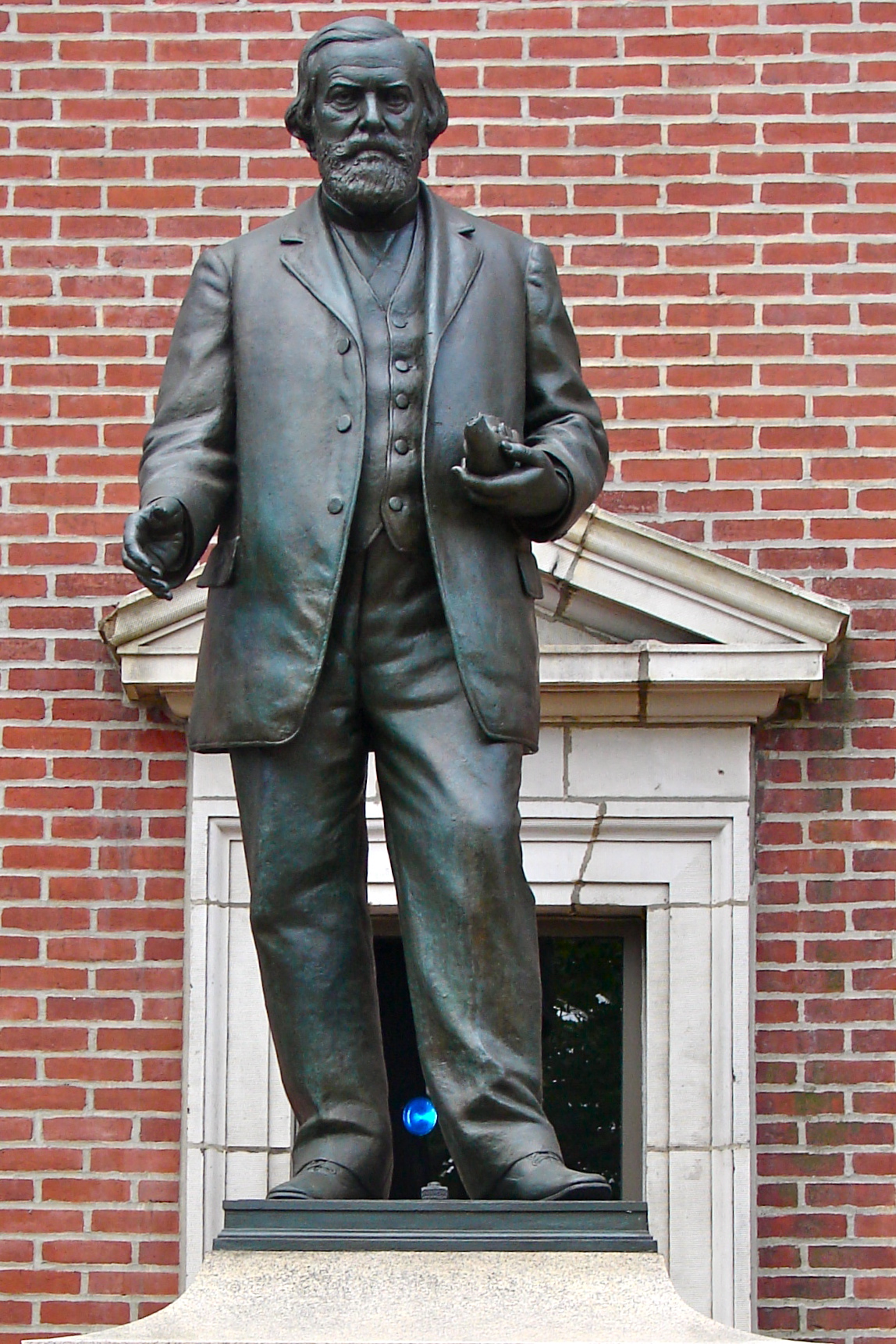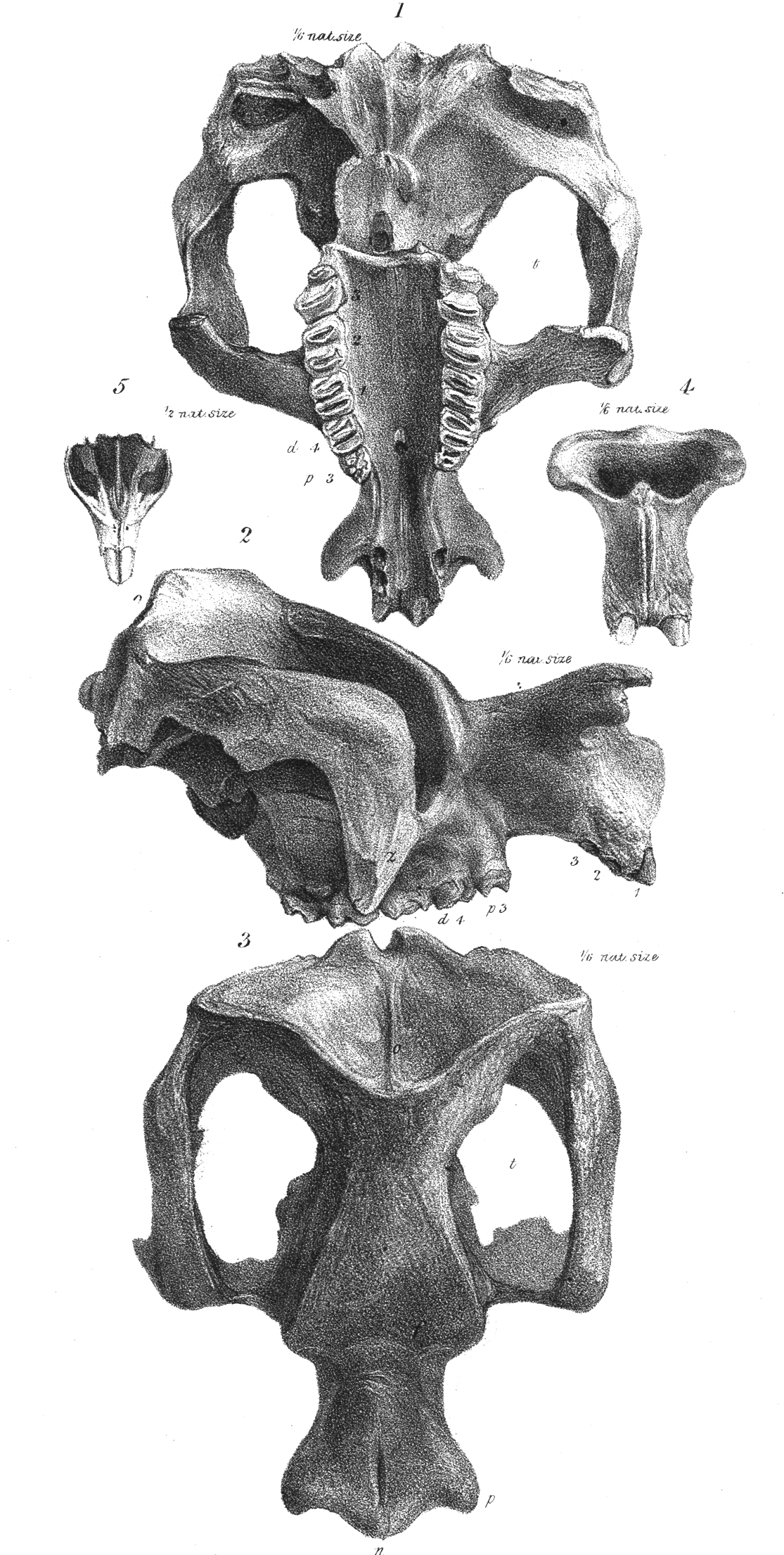|
Canis Dirus
''Canis'' is a genus of the Caninae which includes multiple extant species, such as wolves, dogs, coyotes, and golden jackals. Species of this genus are distinguished by their moderate to large size, their massive, well-developed skulls and dentition, long legs, and comparatively short ears and tails.Heptner, V. G.; Naumov, N. P. (1998). ''Mammals of the Soviet Union'' Vol.II Part 1a, SIRENIA AND CARNIVORA (Sea Cows, Wolves and Bears). Science Publishers, Inc. USA. pp. 124–129. . Taxonomy The genus ''Canis'' (Carl Linnaeus, 1758) was published in the 10th edition of Systema Naturae and included the dog-like carnivores: the domestic dog, wolves, coyotes and jackals. All species within ''Canis'' are phylogenetically closely related with 78 chromosomes and can potentially interbreed. In 1926, the International Commission on Zoological Nomenclature (ICZN) in Opinion 91 included Genus ''Canis'' on its ''Official Lists and Indexes of Names in Zoology''. In 1955, the ICZN's Directi ... [...More Info...] [...Related Items...] OR: [Wikipedia] [Google] [Baidu] |
Joseph Leidy
Joseph Mellick Leidy (September 9, 1823 – April 30, 1891) was an American paleontologist, parasitologist and anatomist. Leidy was professor of anatomy at the University of Pennsylvania, later was a professor of natural history at Swarthmore College and the director of scientific and educational programs at the Wagner Free Institute of Science. His book ''Extinct Fauna of Dakota and Nebraska'' (1869) contained many species not previously described and many previously unknown on the North American continent. At the time, scientific investigation was largely the province of wealthy amateurs. The Leidy Glacier in northwest Greenland was named by Robert Peary after him. Early life and family Joseph Leidy was born on September 9, 1823, to an established Philadelphia family of Pennsylvania Germans. His father, Philip, was a hatter; his mother, Catharine, died during childbirth when he was young. His father then married his wife's first cousin, Christiana Mellick. Leidy also ... [...More Info...] [...Related Items...] OR: [Wikipedia] [Google] [Baidu] |
Pleistocene
The Pleistocene ( , often referred to as the '' Ice age'') is the geological epoch that lasted from about 2,580,000 to 11,700 years ago, spanning the Earth's most recent period of repeated glaciations. Before a change was finally confirmed in 2009 by the International Union of Geological Sciences, the cutoff of the Pleistocene and the preceding Pliocene was regarded as being 1.806 million years Before Present (BP). Publications from earlier years may use either definition of the period. The end of the Pleistocene corresponds with the end of the last glacial period and also with the end of the Paleolithic age used in archaeology. The name is a combination of Ancient Greek grc, label=none, πλεῖστος, pleīstos, most and grc, label=none, καινός, kainós (latinized as ), 'new'. At the end of the preceding Pliocene, the previously isolated North and South American continents were joined by the Isthmus of Panama, causing a faunal interchange between the t ... [...More Info...] [...Related Items...] OR: [Wikipedia] [Google] [Baidu] |
Canis Dirus La Brea
''Canis'' is a genus of the Caninae which includes multiple extant species, such as wolves, dogs, coyotes, and golden jackals. Species of this genus are distinguished by their moderate to large size, their massive, well-developed skulls and dentition, long legs, and comparatively short ears and tails.Heptner, V. G.; Naumov, N. P. (1998). ''Mammals of the Soviet Union'' Vol.II Part 1a, SIRENIA AND CARNIVORA (Sea Cows, Wolves and Bears). Science Publishers, Inc. USA. pp. 124–129. . Taxonomy The genus ''Canis'' ( Carl Linnaeus, 1758) was published in the 10th edition of Systema Naturae and included the dog-like carnivores: the domestic dog, wolves, coyotes and jackals. All species within ''Canis'' are phylogenetically closely related with 78 chromosomes and can potentially interbreed. In 1926, the International Commission on Zoological Nomenclature (ICZN) in Opinion 91 included Genus ''Canis'' on its ''Official Lists and Indexes of Names in Zoology''. In 1955, the ICZN's D ... [...More Info...] [...Related Items...] OR: [Wikipedia] [Google] [Baidu] |
Zygomaturus
''Zygomaturus'' is an extinct genus of giant marsupial belonging to the family Diprotodontidae which inhabited Australia from the Late Miocene to Late Pleistocene. Description It was a large animal, weighing 500 kg (1100 lbs) or over 700 kg (1544 lbs) and standing about 1.5 m (4.9 ft) tall and 2.5 m (8.2 ft) long. Palaeobiology In an analysis of remains from Cuddie Springs, the carbon isotope ratios suggests that it consumed both C3 and C4 plants, with a dental microwear texture indicative of browsing. Preserved remains suggest that ''Zygomaturus'' was widely distributed over Australia during the Pleistocene. Evolution and extinction The earliest members of the genus such as ''Zygomaturus gilli'' appeared during the Late Miocene, during the regional Waitean faunal stage. It is thought that the youngest species, ''Zygomaturus trilobus'' became extinct curing the latter half of the Late Pleistocene, with typical estimates being ... [...More Info...] [...Related Items...] OR: [Wikipedia] [Google] [Baidu] |
Richard Owen
Sir Richard Owen (20 July 1804 – 18 December 1892) was an English biologist, comparative anatomist and paleontologist. Owen is generally considered to have been an outstanding naturalist with a remarkable gift for interpreting fossils. Owen produced a vast array of scientific work, but is probably best remembered today for coining the word '' Dinosauria'' (meaning "Terrible Reptile" or "Fearfully Great Reptile"). An outspoken critic of Charles Darwin's theory of evolution by natural selection, Owen agreed with Darwin that evolution occurred, but thought it was more complex than outlined in Darwin's ''On the Origin of Species''. Owen's approach to evolution can be considered to have anticipated the issues that have gained greater attention with the recent emergence of evolutionary developmental biology. Owen was the first president of the Microscopical Society of London in 1839 and edited many issues of its journal – then known as '' The Microscopic Journal''. Owen al ... [...More Info...] [...Related Items...] OR: [Wikipedia] [Google] [Baidu] |
Zygomaturus BW
''Zygomaturus'' is an extinct genus of giant marsupial belonging to the family Diprotodontidae which inhabited Australia from the Late Miocene to Late Pleistocene. Description It was a large animal, weighing 500 kg (1100 lbs) or over 700 kg (1544 lbs) and standing about 1.5 m (4.9 ft) tall and 2.5 m (8.2 ft) long. Palaeobiology In an analysis of remains from Cuddie Springs, the carbon isotope ratios suggests that it consumed both C3 and C4 plants, with a dental microwear texture indicative of browsing. Preserved remains suggest that ''Zygomaturus'' was widely distributed over Australia during the Pleistocene. Evolution and extinction The earliest members of the genus such as ''Zygomaturus gilli'' appeared during the Late Miocene, during the regional Waitean faunal stage. It is thought that the youngest species, ''Zygomaturus trilobus'' became extinct curing the latter half of the Late Pleistocene The Late Pleistocene is ... [...More Info...] [...Related Items...] OR: [Wikipedia] [Google] [Baidu] |
1850s In Paleontology
Year 185 ( CLXXXV) was a common year starting on Friday (link will display the full calendar) of the Julian calendar. At the time, it was known as the Year of the Consulship of Lascivius and Atilius (or, less frequently, year 938 ''Ab urbe condita''). The denomination 185 for this year has been used since the early medieval period, when the Anno Domini calendar era became the prevalent method in Europe for naming years. Events By place Roman Empire * Nobles of Britain demand that Emperor Commodus rescind all power given to Tigidius Perennis, who is eventually executed. * Publius Helvius Pertinax is made governor of Britain and quells a mutiny of the British Roman legions who wanted him to become emperor. The disgruntled usurpers go on to attempt to assassinate the governor. * Tigidius Perennis, his family and many others are executed for conspiring against Commodus. * Commodus drains Rome's treasury to put on gladiatorial spectacles and confiscates property to sup ... [...More Info...] [...Related Items...] OR: [Wikipedia] [Google] [Baidu] |
.png)



